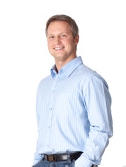More than 1000 wines at you disposal in a secure online store
- Wines
- Supplements
- Buy
This is your área at LusaWines, if your not a LusaWines costumer register now
LusaWines unveils wine, with all it’s charms
- The journey of wine
- LusaWines multimedia
Be aware of what is happening in the world of wine and more ...
- LusaWines
The art of serving
Serving wine

Enjoy wine is an art that everyone can develop individually. As we drank wine and talk and read about them, the ability to distinguish the differences between them develops naturally. The wine choosing should be associated with the dish that will be served and with the guests that will enjoy it. The order in witch wines are served must obey some rules: first serve white wines and then the reds, wines lighter in the beginning and in the end, the full-bodied, dry wines and then sweet. Never the less one can serve fresh sweet white as an appetizer before a meal. When serving wine one should take some precautions:
- - Open the bottle correctly;
- - See if the wine needs decanting;
- - Check the temperature of the wine.
Open the bottle

The opening of the bottle should be done with care:
- - Cut the top of the capsule (usually of lead or plastic) and remove it;
- - Clean the top edges of the cork and of the bottle with a clean cloth to remove any residue;
- - Insert the corkscrew in the center of the cork, keeping the bottle upright, being careful not to puncture the cork from the top, so one avoid cork debris into the bottle. With sparkling wines one can tilt the bottle at an angle of 30°C and release the cork without leaking anything. Then, pull the cork slowly and without shaking the bottle;
- - Clean the edges of the bottle and the top of the interior, to remove any residue;
- - Smell the cork to detect any abnormalities.
Decanting
The decanting operation is a delicate one, which may be necessary when the wine has deposit. Older wines, with more than 10 years, can therefore develop sediment that needs to be decanted. If one chooses not to decant the wine it must be served with utmost care, not tilting the bottle too much. Hold the glass tilting it slightly and pour the wine at a regular pace. Repeat pouring in the remaining cups without putting the bottle in an upright position.
If one chooses to decant the wine following precautions should be taken: Before decanting, the bottle must be 24 to 48 hours in an upright position to get all the deposit at the bottom, after removing the cork, slowly and steadily pour the wine bottle into the decanter/pot (this operation must be performed in the presence of a light source, so you can clearly see the arrival of the deposit). When the first particles appear near the storage bottleneck for the operation, place, with a quick movement, the bottle upright.
Wine temperature
To serve the wine at the right temperature, often marked on the back label of the bottle, it is useful to have a thermometer. Concerning the temperature at which wines should be served, there are some mistakes to be avoided: white wines should not be stored for long in the refrigerator (cooling white wine in the refrigerator or in a bucket of ice on the day that it is going to be served is sufficient); one should not freeze too much white wine (do not use the freezer) or throw ice in the wine. As for red wine, one should not serve it too warm, the room temperature should be enough.
Wine
Temperature (ºC)
Sparkling Wines
6 to 8
Young white wines
8 to 10
Aged white wines
12
Dry Rosé wines
8
Young red wines
12 to 15
Aged red wines
16 to 18
Tawny Port wine
12 to 16
Vintage Port wine
16 to 18
Moscatel wine
12 to 14
Madeira wine
10 to 14
The glass

To fully appreciate the personality of the grape varieties and the subtle character of wine, it is essential to use the proper glass. So when one carries a cup to ones mouth, the sense of taste is on alert. When drinking, three messages are automatically sent: temperature, texture and flavour. The wine is composed of different elements: fruit, acidity, mineral components, tannin and alcohol. The combination of the appreciation of smell and taste lead us to the wonderful world of flavour. One should take into account the following aspects for glasses: It should be colourless, transparent, unadorned, thin-walled, thin board, with foot and a good glass. The cup size is important, it enables the display of quality and intensity of aromas, the evaporation space has to be chosen according to the personality of the wine; On the capacity, in general, a glass must have sufficient capacity for 6 to 8 cl of wine, occupying only 1/3 or slightly more by volume (never more than half the capacity), the rest being reserved for the bouquet.









